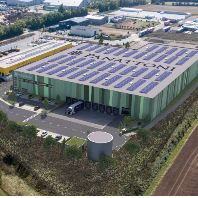The European non-listed property funds market saw 1.1bn of secondary trades in the last 12 months, according to the first results of a study by INREV.
INREV's Liquidity Provisions Study reports that there were trades in 18 funds in the last 12 months amounting to 1.1 bln. and the respondent funds had another 230 mln. of trades in the pipeline. In addition, the market saw 700 mln. of redemptions in 12 funds, with a further 580 mln. in the pipeline.
From the study sample of 160 funds representing a gross asset value (GAV) of 93 bln., just 6.6 bln. do not offer investors any ability to trade or redeem. A trade is defined as a selling of a position in a fund to another investor which does not result in a change to the size of the fund's capital base while redemptions cause the size of a fund's capital base to change.
"The study shows that the majority of funds offer investors liquidity but so far these provisions have in the main not been required by investors. However, we have seen institutional investors in the UK and German exercising redemptions in the UK and there is more likelihood of investors considering secondary trading as they look to rebalance their portfolios in changing market conditions," said Mike Clarke, Head of Property Distributions at Schroder Property Investment Management and chair of the INREV Secondary Markets Committee.
The aim of the INREV study is to understand the liquidity provisions offered across the institutional non-listed property funds universe. This includes understanding liquidity provisions by style and other fund characteristics as well as examining the number and type of trades in the market. This is expected to promote understanding as to the barriers behind a more organised secondary trading market.
A second part of the study currently ongoing involves talking to investors about their liquidity requirements in funds and whether this has changed in light of recent market conditions.
By style, opportunity funds are least likely to offer liquidity with half of all opportunity funds not giving investors the ability to trade or redeem. Core and value added funds offer investors the most liquidity with just 1% of core funds and 10% of value added not offering any provisions to redeem or trade. However, value added funds are more likely to offering trading provisions (70%) whereas core funds are more balanced between offering facilities for redemption, trading or both.
For the future secondary trading, respondents saw opportunity funds as the style most likely to see increased trading with 70% expecting more trades in the future. This may in part come from investors looking to change allocations to opportunity funds due to expectations of lower than anticipated returns.
However, for core and value added funds the majority 56% and 69% of respondents respectively expected the amount of trading to remain the same.
The study showed that respondents also saw that emergence of an organised platform for secondary market as unlikely with 62% rating this possibility as a four or five (scale of one to five with one as good). This was in addition to respondents having a low level of awareness of INREV's Secondary Market Guidelines with 51% rating their familiarity with the guidelines as a four or five (scale of one to five where one is good).
"Even though respondents view there being little potential for the emergence of an organised secondary market, it does not mean it is an area that cannot be made more efficient with greater transparency and standardisation of information.
"The secondary market guidelines are now part of the newly integrated INREV Guidelines, which we expect to give them more prominence among fund manager and investors. This study will also feed into the work of the Secondary Markets Committee, which aims to stimulate the further development of a secondary market," said Andrea Carpenter, Acting CEO, INREV.
Source: INREV







